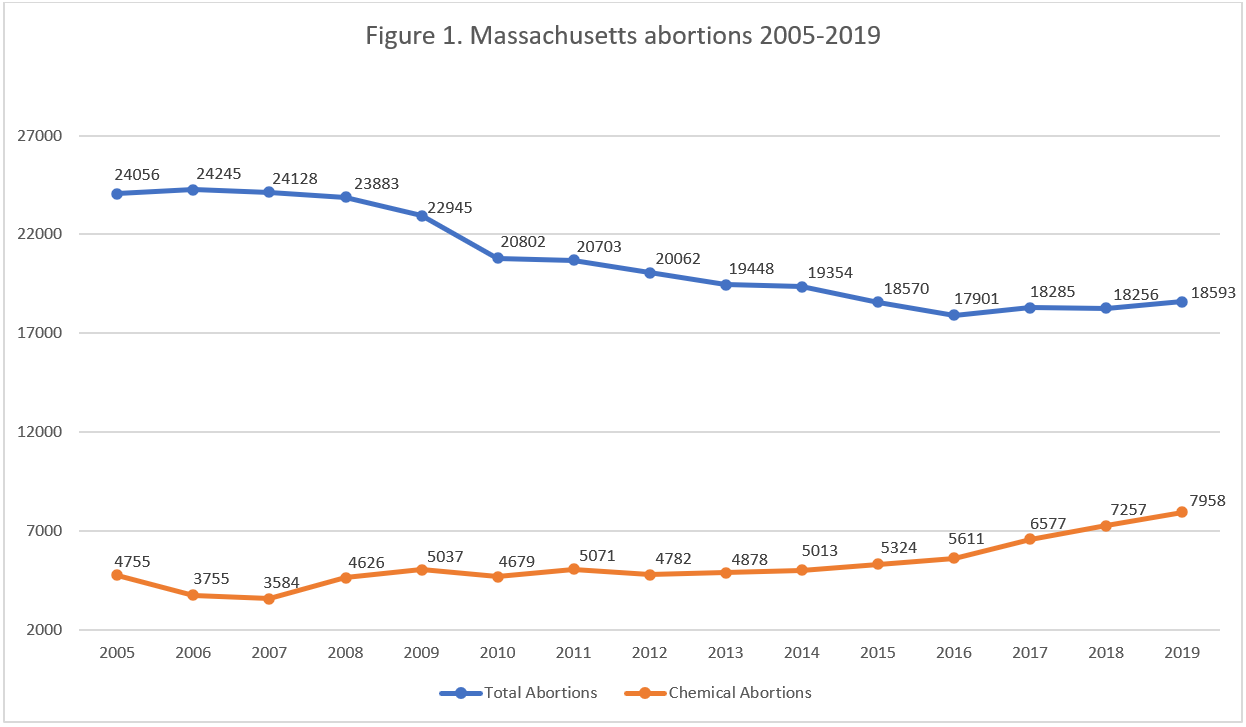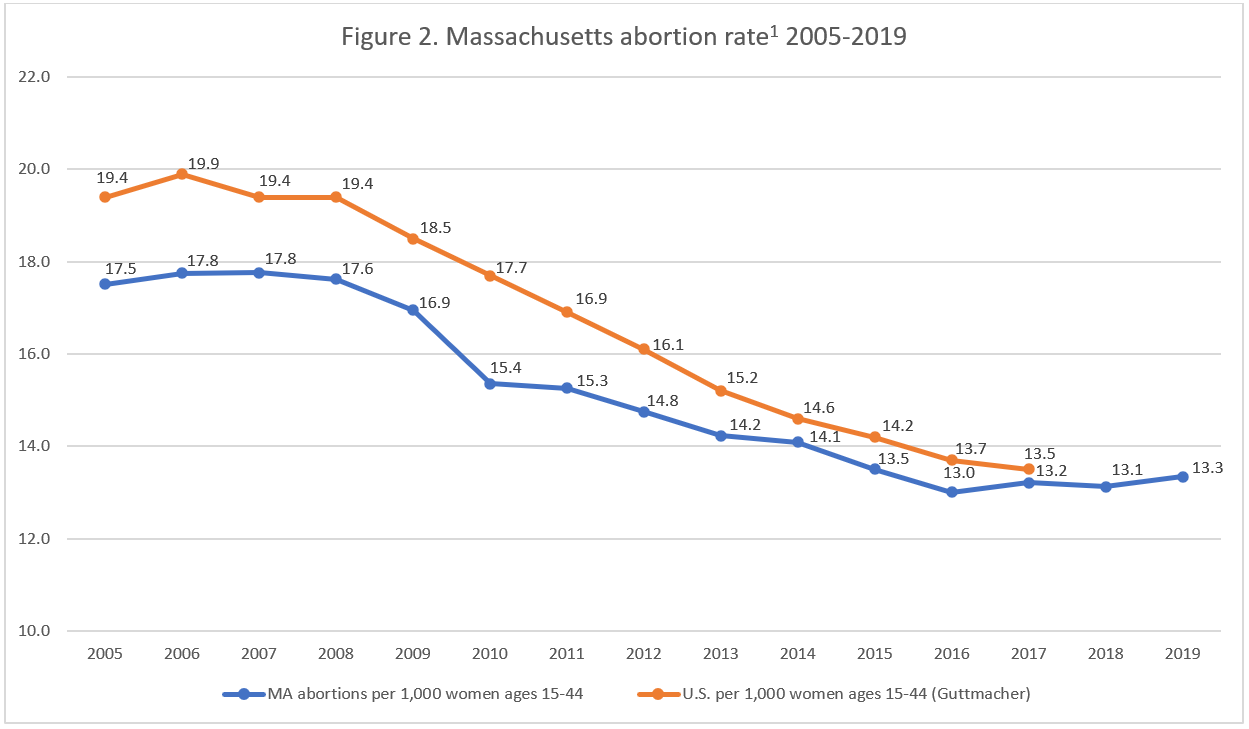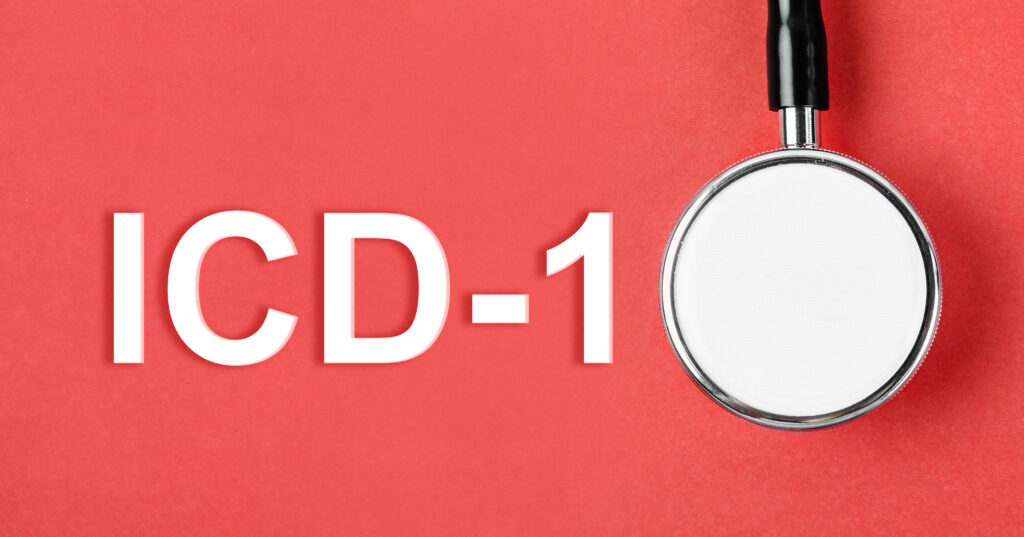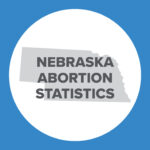Abortion Reporting: Massachusetts (2019)
The Massachusetts Department of Public Health provided Massachusetts’ 2019 abortion statistics to the Charlotte Lozier Institute upon request. Abortions in the Bay State increased from the previous year.
Statistics and Changes in Massachusetts Abortions, 2018-2019

Abortion Totals and Trends
In 2019, there were 18,593 abortions reported in Massachusetts, up two percent from 2018 (Fig. 1). Chemical abortions composed 43 percent of the total, jumping 10 percent from 7,257 in 2018 to 7,958 in 2019. The Charlotte Lozier Institute (CLI) estimates that Massachusetts’ 2019 abortion rate was 13.3 abortions per 1,000 women ages 15 to 44, two percent higher than the 2018 abortion rate (Fig. 2). As of July 2021, 36 states had released 2019 abortion statistics, including 21 that showed increases from the previous year.
State Report Summary
In 2019, the vast majority of the abortions reported in Massachusetts (96 percent) were performed on state residents, while three percent were performed on women from out of state and 74 abortions were on women of unknown residency.
Seven percent of the abortions were on girls age 19 or younger, a lower percentage than in most other states. Until recently, Massachusetts maintained a parental consent requirement for abortions performed on minors. However, in 2020, Massachusetts stripped these protections from 16- and 17-year-old girls.
A quarter of the abortions were performed on women ages 20 to 24, and 29 percent were on 25- to 29-year-olds. Thirty-five percent of the abortions reported in Massachusetts were on women in their 30s, and five percent were on women age 40 or above.
In 2019, 47 percent of Massachusetts abortions were performed on white women, and 21 percent were on black women. Six percent of the abortions were performed on Asian women, and 19 percent were obtained by women of other races. Race was not specified for seven percent of the abortions. Sixty-two percent of the abortions were performed on non-Hispanic women, a fifth were on Hispanic women, and 18 percent were on women of unknown ethnicity.
Seven percent of the abortions occurring in Massachusetts in 2019 were on women who had not completed high school. Twenty-one percent were obtained by women with a high school diploma as their highest level of education, and 19 percent were performed on women who had attended college but did not have a degree. Five percent of the abortions were on women with an associate degree, 13 percent on women with a bachelor’s degree, and four percent on women with a postgraduate degree. However, level of education was not reported for 30 percent of the abortions.
Sixty-nine percent of the abortions were on unmarried women, while 14 percent were performed on married women and 16 percent were on women of unknown marital status. Just over half the abortions (51 percent) were performed on women with no previous abortions. Twenty-six percent were performed on women with one prior abortion, and 20 percent were on women with two or more previous abortions. Forty-two percent of the abortions were performed on women no previous live births, compared to 21 percent with one live birth and 28 percent with more than one. The number of prior abortions was not reported for three percent, and the number of previous live births was not reported for 10 percent.
Chemical abortions composed 43 percent of the total in 2019. Forty-one percent of the abortions were via suction curettage, and 14 percent were dilation and evacuation abortions. Sixty-seven abortions (0.4 percent) were intrauterine saline instillation abortions, and 60 abortions (0.3 percent) were sharp curettage procedures. One percent of the abortions were performed via some other means.
Seventy-one percent of Massachusetts abortions were performed at eight weeks of gestation or earlier, and a fifth occurred between nine and 12 weeks. Seven percent of the abortions were reported between 13 and 18 weeks of gestation, and two percent were performed between 19 and 23 weeks. Ten abortions were performed at 24 weeks of gestation or later.
In 2019, 82 percent of Massachusetts abortions were performed in clinics. Seventeen percent were performed by hospitals, and one percent were reported by physicians. Planned Parenthood’s three abortion centers accounted for 56 percent of all abortions reported in Massachusetts and 68 percent of the abortions performed in clinics.
The “Roe Act”
In 2019, the Massachusetts legislature considered the “Roe Act”, a pair of radical abortion bills that would expand abortion in Massachusetts. The bills failed to gain traction, so a similar version was added as an amendment to Massachusetts’ 2021 budget. The governor vetoed the bill, but the legislature voted to override his veto in December 2020.
Under the Roe Act, abortion after 24 weeks post-implantation (approximately 27 weeks of gestation) is permitted for babies with disabilities and to protect the woman’s physical and mental health, a broad justification that allows most abortions. The act weakened protections for babies who survive abortions. Additionally, the act eliminated a parental consent requirement for 16- and 17-year-olds.
State Ranking
In CLI’s 2016 survey of state abortion reporting, Massachusetts was ranked near the bottom of the list due to its failure to publish its abortion reports online. Massachusetts could improve its reporting by making reports accessible on the website of the Department of Public Health, as most other states do. Massachusetts could also collect and report information on complications caused by abortion.


- Rates were calculated by CLI using the following formula: (total number of abortions performed in Massachusetts ÷ number of resident women ages 15-44) x 1,000. Rates may differ slightly from previous CLI articles due to revised population estimates. Population estimates were obtained from the CDC WONDER database.






























